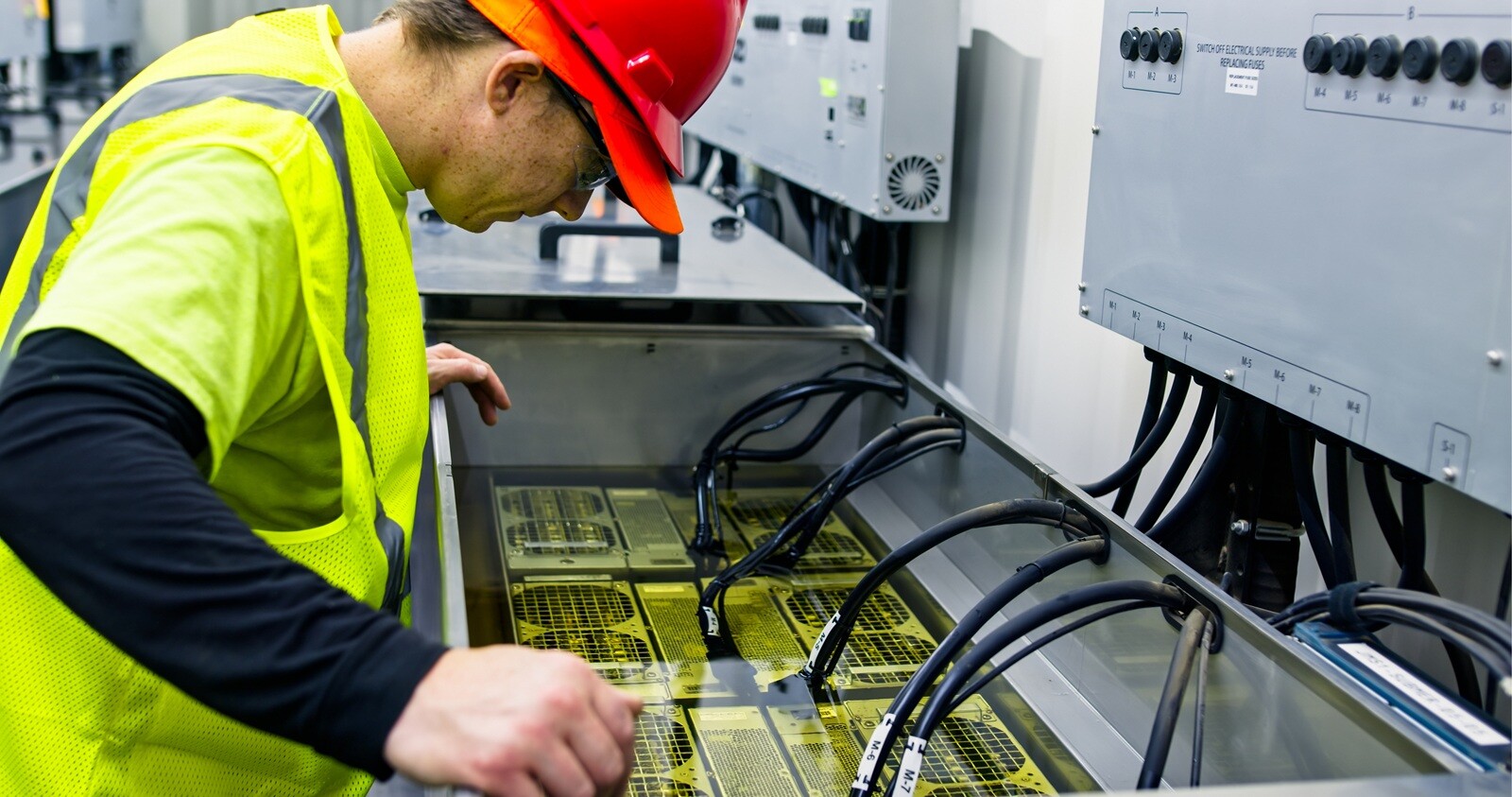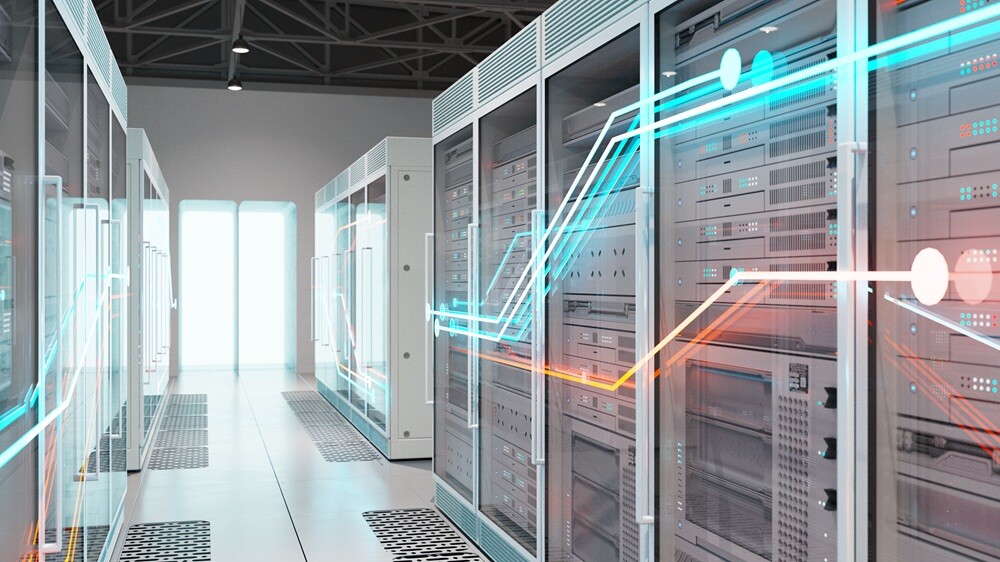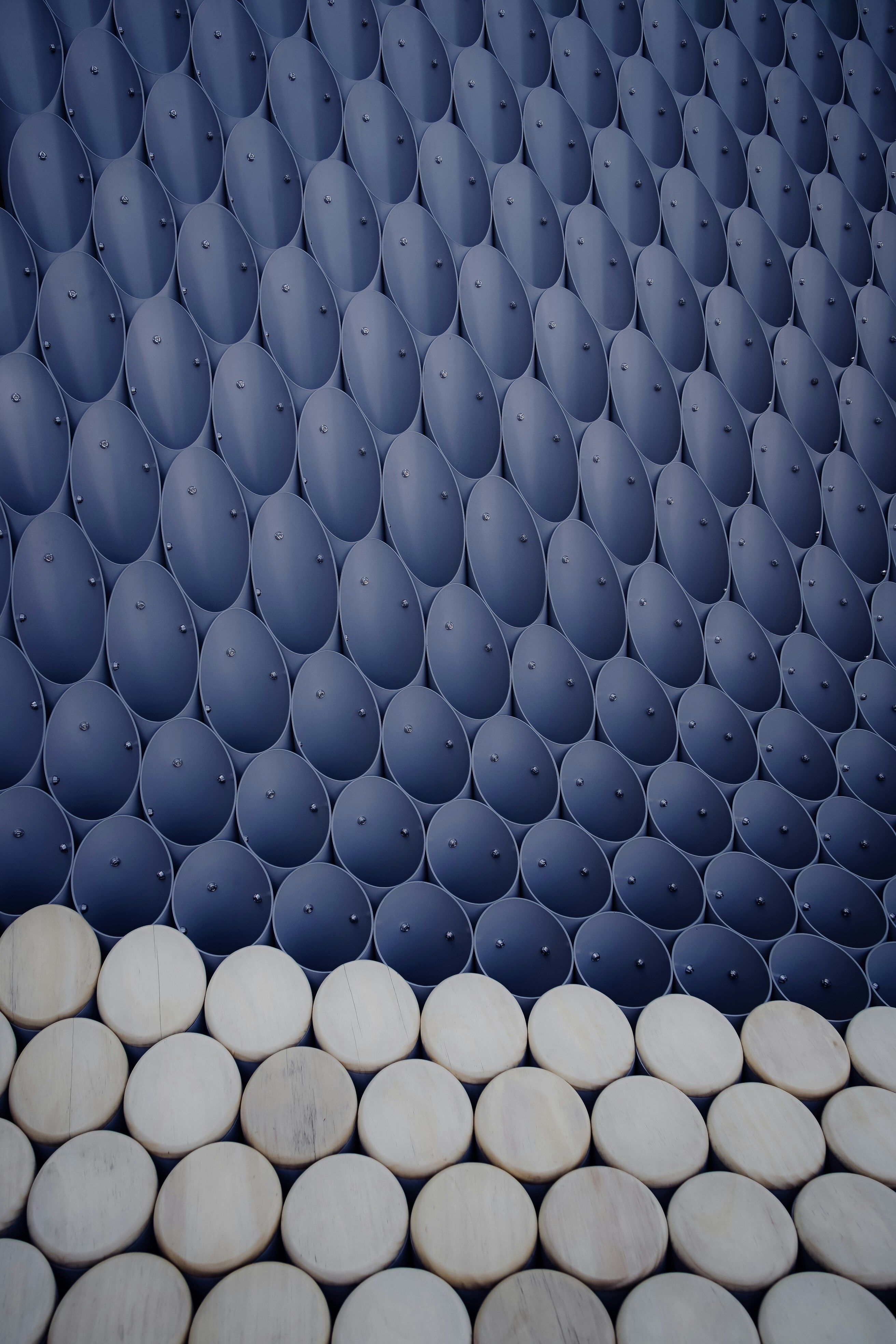BLOG
Salute launches direct-to-chip liquid cooling service for AI and HPC facilities
Salute has launched a direct-to-chip (DTC) liquid cooling service to support AI and high-performance computing (HPC) environments.The company described the solution as “the first of its kind,” and said it represents a “major new milestone” for the data center industry that will help to solve complex operational challenges in the AI and HPC space.
The service helps to mitigate risks associated with DTC liquid cooling, such as leaks or interruptions, by providing companies with a detailed design and operational assessment that creates a customizable model for each individual facility.
Data center operators that use the service are also provided with EOPs, MOPs, and SOPs (Emergency, Maintenance, Standard operating procedures) for all aspects of DTC operations, including chemistry management, leak management, safety protocols, CDU management, risk mitigation, and other operational processes.
Salute also offers a training program and a library of DTC best practices that have been developed in partnership with CDU manufacturers, leak management vendors, hyperscalers, and are continuously updated.
According to Salute, several data center operators, including Applied Digital, Compass Datacenters, and SDC, are already working with Salute for their DTC liquid cooling operations.

Frore Systems’ LiquidJet cooling tackles AI data centre demands
Frore Systems has unveiled its LiquidJet direct-to-chip liquid cooling solution designed to meet the growing demands of AI data centres. This concept replaces the so-called traditional 2D microchannels with 3D short-loop jet-channels, which allow up to 600W/cm² hotspot cooling.
Known for its AirJet solid-state cooling devices, Frore Systems is today tackling a much bigger subject – high-power chip cooling. Seeing the growing power expectations of upcoming AI GPUs, the company began developing yet another new cooling solution, expected to handle up to 4,400W chips.
Unlike current cold plates, which rely on skived 2D microchannel manufacturing, Frore Systems’ LiquidJet takes a different approach, fabricating 3D short-loop jet channels using semiconductor-style metal-wafer processing.
The LiquidJet is expected to unlock higher performance from existing GPUs, such as Nvidia Blackwell Ultra with its 1,400W thermal design, and upcoming Rubin, Rubin Ultra, and even Feynman architectures.
Frore advertises up to 600W/cm² hotspot cooling at a 40°C inlet, which is roughly twice higher hotspot power density versus traditional cold plates. But that’s not all, the LiquidJet also promises about 50% higher heat removal per flow (kW/lpm), and around four times lower pressure drop.
“LiquidJet’s unique 3D architecture, with customised short-loop jet channel microstructures, sets a new bar for coldplate thermal performance,” said Seshu Madhavapeddy, CEO and Founder of Frore Systems.

Equinix tops out second Johor data center in Malaysia
Colocation firm Equinix has topped out its latest data center in Johor, Malaysia.
Equinix’s senior director of IBX Operations, Singapore, Malaysia & Indonesia, Gavin O’Reilly, last week posted on LinkedIn that the company had topped out JH2, the company’s second data center in Johor.
The first 1,100-rack phase of the 7MW, 19,135 sqm (205,967 sq ft) facility is due to launch in Q1 2027. The site will be equipped with liquid cooling. A further 1,125 rack phase is due to launch later in Q3 2027
Located on the same campus, JH1 was initially announced in 2022, when Equinix said it was investing $40 million to provide capacity for 500 cabinets across 1,960 sqm (21,100 sq ft) of colocation space. The facility launched last year.
Equinix is in discussions to acquire more land to build the campus out to 77MW.
Elsewhere in Malaysia, the company operates the KL1 data center in Kuala Lumpur. A second is also in development.
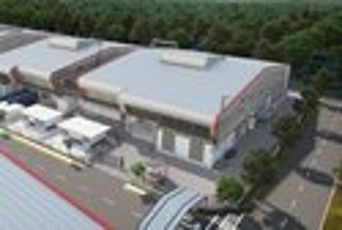
24MW data center for sale in Puyallup, Washington
A data center is up for sale in Puyallup, Washington. The 24MW South Hill Business and Technology Center, which consists of a data center and two office buildings, is located on an 86-acre land parcel at 1023 39th Avenue SE.
The city of Puyallup is located south of Seattle, which is the State of Washington’s most populous city and a data center hotspot.
A listing for the facility states that the current owner has spent “nearly $200 million over the past 18 months to expand the data center to 24MW of critical load including liquid-cooled racks for high-density, AI, and cloud users, along with other campus upgrades.”
The facility is currently owned by Centeris, a colo provider owned by real estate company Benaroya. It is Centeris' sole data center.
The data center has a direct connection to the Westin Building Exchange, a major telecommunications hub and colocation facility in Seattle’s Downtown Business District.
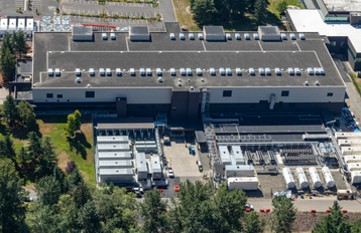
AWS builds separate cabinet to bypass Nvidia networking hardware
Amazon Web Services (AWS) has created an unconventional workaround to keep using its custom networking hardware in Nvidia's latest rack-scale systems: a separate cabinet just for network cards.
According to analyst firm SemiAnalysis, Nvidia’s flagship NVL72 rack-scale system uses shorter 1U server trays – meaning hyperscalers like AWS can’t physically fit its network cards into these slimmer trays.
For the previous generation GB200s, AWS employed a custom design called NVL36x2 to connect two 36-GPU clusters to create a 72-GPU system. That workaround, however, required extra server trays to fit some nine network cards per tray, which resulted in more bugs than using Nvidia’s native NVL72 design.
Instead of squeezing its custom NICs into smaller trays, AWS got creative. Its engineers made it so that network cables from the GPUs connect to a separate side cabinet full of just network cards.
AWS has a rich history of designing its own data center hardware. It previously teamed up with Broadcom to build custom network switches.
The complexity in its attempts to deploy its own custom NICs with the GB300 lies in its support for Elastic Fabric Adapter (EFA) compared to RoCEv2 Ethernet.
In the SemiAnalysis point of view, AWS’s GB300 rework helps to remove a single point of failure in Nvidia’s reference design, where each GPU talks to only one ConnectX-8 NIC.
GB200 server systems using the chip giant’s original reference design reported the strongest performance across metrics, including throughput-per-dollar and tokens-per-megawatt, outpacing rival systems like the AMD MI355X.
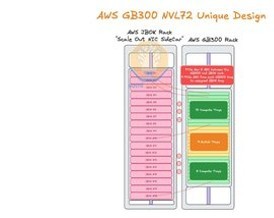
OpenAI, Oracle, and Vantage plan Stargate Wisconsin data center, expected to be 'close to a gigawatt'
OpenAI plans to deploy another Stargate data center cluster, this time in Port Washington, Wisconsin.
The project will be developed by the generative AI company, alongside Oracle and Vantage Data Centers, on a site from powered land provider Cloverleaf Infrastructure.
The facility is the 'unnamed site in the Midwest' that OpenAI referenced when it disclosed plans for five Stargate data centers in the US, alongside the existing Abilene, Texas, campus.
The other known projects are in Doña Ana County, New Mexico, and in Shackelford County, Texas. That latter facility is also expected to be from Vantage, with the company working on a 1.4GW campus. Altogether, the US Stargate campuses are planned to grow to 4.5GW of IT capacity.
Vantage said that it will develop 500 of the 672 total acres of the site, with the rest preserved for natural biodiversity. More than 2,000 native trees will be planted, along with other native landscaping and an eight-foot planted berm with native species for natural sound mitigation.
The campus will use closed-loop liquid cooling, and Vantage said that it will invest in local water restoration projects to achieve water positivity.
Vantage will also invest a minimum of $175 million to make regional infrastructure upgrades, including expanded capacity for water and wastewater treatment facilities, upgraded water mains and sewer lines, a new water tower, and power infrastructure.
Development is expected to employ more than 4,000 majority-union skilled construction jobs, with more than 1,000 jobs over the longer term.
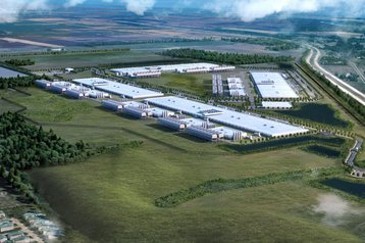
Google launches water sustainability project in The Dalles, Oregon
Google has completed a new water sustainability project in The Dalles, Oregon.
The search and cloud giant announced the completion of a new aquifer storage and recovery (ASR) system in partnership with the City. According to Google, it is part of a deep investment in the state, where it operates several major data centers.
In addition to the ASR system, Google is also permanently transferring groundwater rights associated with the former smelter site to The Dalles. According to Google, this will augment the city’s existing water supplies from local streams and the underlying aquifer, making a previously private resource available for public benefit. As a result of the initiatives, Google claims that it has provided the community with over 100 million additional gallons of water annually.
Google says its decision to support these initiatives is due to the significant water demand its data centers put on the City. Google first entered The Dalles back in 2006 and expanded its facility in 2015. Further tax concessions for two new buildings were granted in 2021. In June 2025, the company announced its intention to make further upgrades to the site.
Despite the progress, Google has been criticized recently for a technical paper detailing its methodology for measuring the energy, emissions, and water impact of Gemini AI prompts. According to the paper, the median Gemini Apps text prompt uses 0.26 milliliters (or about five drops) of water.

Vertiv revenue jumps 29 percent on booming data center demand
Vertiv shares jumped to an all-time high after the company reported its third-quarter results.
Revenues for the power, cooling, and rack company jumped 29 percent year-over-year to $2.6 billion, with a 43 percent growth in the Americas and 20 percent growth in APAC.
Notably, third-quarter 2025 organic orders increased 60 percent year-over-year, while the company said that its order backlog had reached $9.5 billion.
Quarterly operating profits hit $517m, increasing faster than revenue to 39 percent (adjusted, it was $596m, or up 43 percent). Adjusted operating margin was 22.3 percent, up 220 basis points, which Vertiv said was down to operational leverage on higher sales and manufacturing and procurement productivity benefits. However, the company said that margins were partially offset by negative tariff impact.
The company said that it was increasing its full-year 2025 guidance to revenues of more than $10bn, although it warned that its guidance did not take into account certain potential threatened tariffs because the "situation remains fluid and uncertain."
While Americas and APAC revenue growth was highlighted in Vertiv's announcement, the company did not disclose EMEA revenue.

Telehouse breaks ground on latest London data center
Data center firm Telehouse has broken ground on a new facility in London, UK.
The KDDI-owned company this week broke ground on the 33MW Telehouse West Two data center at its existing Docklands campus in East London.
The nine-storey building will cover a total gross area of 32,000 sqm (344,445 sq ft), with 11,290 sqm (121,524 sq ft) of white space across six levels, offering 4.4.MW per floor.
The £275m ($370m) project is set for completion in 2028.
Kenkichi Honda, managing director, Telehouse Europe says: “The new Telehouse West Two site marks another important step in our ongoing mission to deliver world-class, sustainable digital infrastructure. This expansion will empower digital transformation for enterprise clients across multiple sectors, enabling them to benefit from emerging technologies which are shaping the future world, while supporting the uncompromising need for energy efficiency and carbon neutrality.”
The new facility will integrate both air and liquid cooling technologies, and feature two meet-me rooms and four dedicated connectivity risers. It will use HVO as fuel for its backup generators.
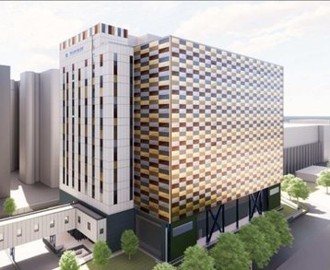
Leave A Reply
LOGO
This stunning beach house property is a true oasis, nestled in a serene coastal community with direct access to the beach.
Opening Hours
Monday - Friday : 9AM to 5PM
Sunday: Closed
Closed during holidays
Contact
+18888888888
hezuo@eyingbao.com123 West Street, Melbourne Victoria 3000 Australia

